How not to make a damn fire: a detailed and understandable educational program on extension cords
Categories: Life hacks | Technology | World
By Pictolic https://pictolic.com/article/how-not-to-make-a-damn-fire-a-detailed-and-understandable-educational-program-on-extension-cords.htmlAn electric extension cord is a simple thing, found in every house, garage, dorm, and often, the attitude towards it is frivolous. Sometimes it ends badly.
The Picaboo Tech.spiritus user described in detail how to choose and use extension cords correctly so as not to start a fire.
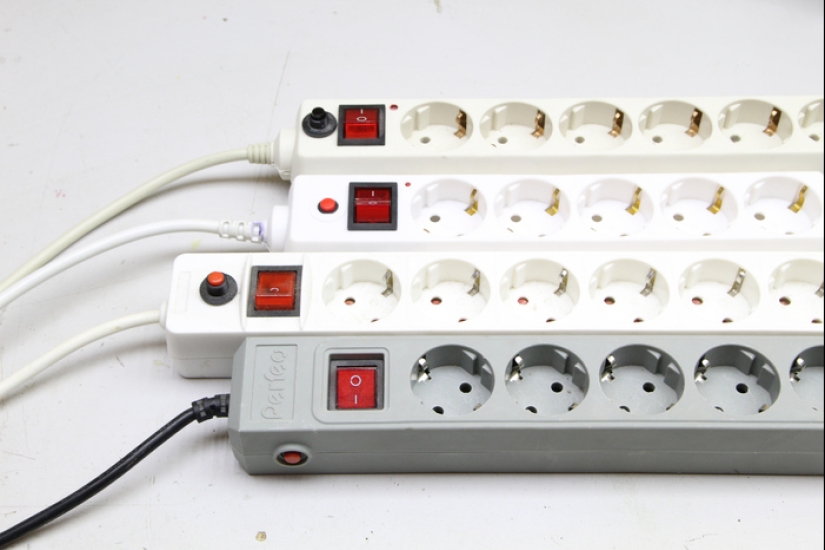
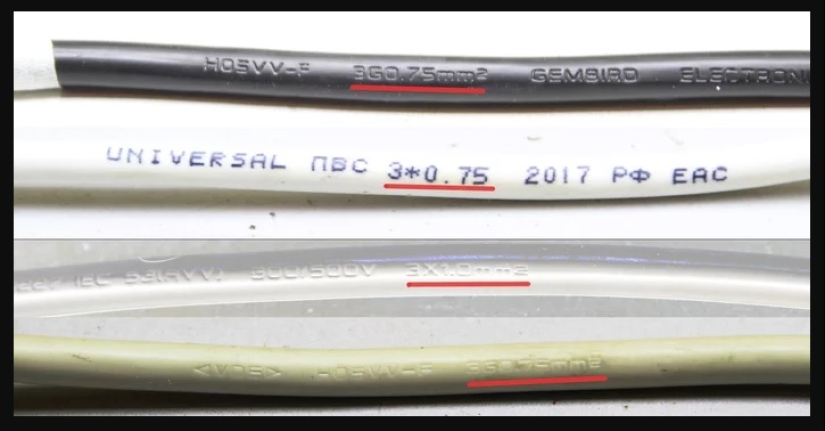
The cable cross-section (the cross-sectional area of the conductive core of the cable, measured in square millimeters), is like the diameter of a water pipe, the more taps we cut into the pipe, the larger the diameter is needed to ensure an acceptable head for everyone.
If there are a lot of consumers, but they are low-power and consume a thin trickle (for example, phone chargers), then there may be a lot of them on a thin pipe, and there is no problem. But if the consumer is powerful (for example, an electric kettle), then it may turn out that only one such consumer can be put on the pipe.
Extension cords are made of standard cables, therefore, possible wire cross-sections of 0.5 sq.mm, 0.75 sq.mm, 1.0 sq.mm, 1.5 sq.mm, 2.5 sq.mm. The cable cross-section is indicated on the cable itself during production. Since the conductive core of the cable is made of expensive copper, the price of an extension cord with a cross section of 2.5 mm2 can be several times higher than the same, but with a cable cross section of 0.5 mm2. And this is provided that the manufacturer did not underestimate the cross-section (for example, instead of 1.5, he actually made 1.3 mm2).
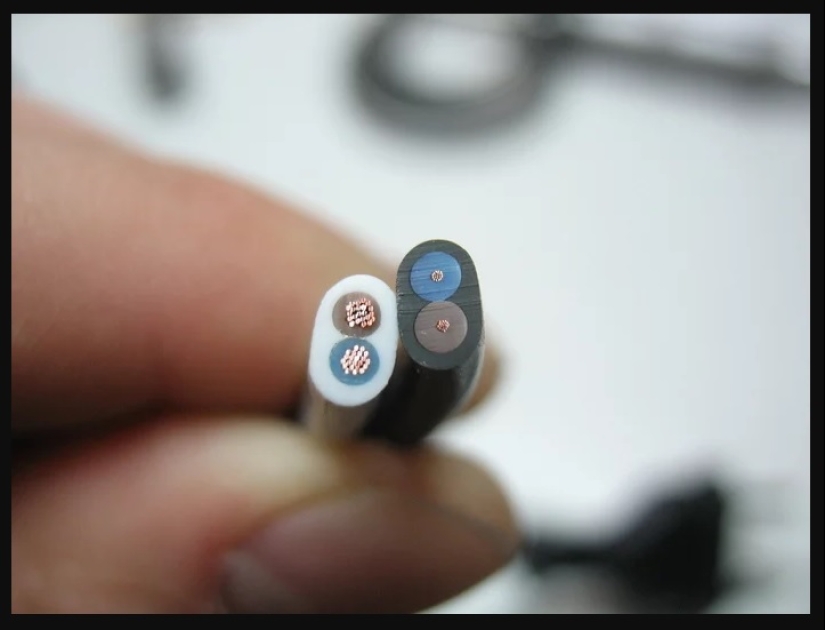
The cross-section is selected based on the operating load, here are the minimum cross-section values from GOST R 51539-99:
The larger the cross-section– the better. My recommendation is never to buy extension cords with a cross section of less than 1.5 mm2. And the reason is that there will always be someone (neighbor, child, grandfather, etc.) who will try to turn on the first device in the first extension cord. And if this device turns out to be a heater that will be included in the 0.5 mm2 extension cord, which you bought only to power the table lamp, then there will be trouble.
Unfortunately, extension cords with a cross section of more than 1.5 mm2 are rare, they are expensive, which is why it is more profitable to simply buy a cable coil, a plug, a socket block and make an extension yourself. The outer diameter of the cable often (but not always) indicates a cross section. If a thin cable goes to the socket block– then you should not include something powerful in it.
The extension cable can have two or three live conductors. Phase (L, brown), Zero (N, blue), and Earth (PE, yellow-green). The number of cores is indicated in the marking before the cross section, for example 2x0.75 or 3x0.75. I recommend always choosing one that has three cores, i.e. the extension cord has a grounding conductor, even if there is no grounding in the outlets at home – you never know what kind of party you will need an extension cord.
Extenders range from short (0.5 m) to long (>50m). If the former often work simply as splitters, then the latter are used in construction, in the country, during repairs and so on. During operation, the cable heats up from the current flowing through the extension cord. And the smaller the cable cross-section– the stronger the heating (it is considered permissible to heat the core during operation to +65 C (PUE 1.3.10), but my personal opinion is that if the wire is warm, the cross-section is not enough).

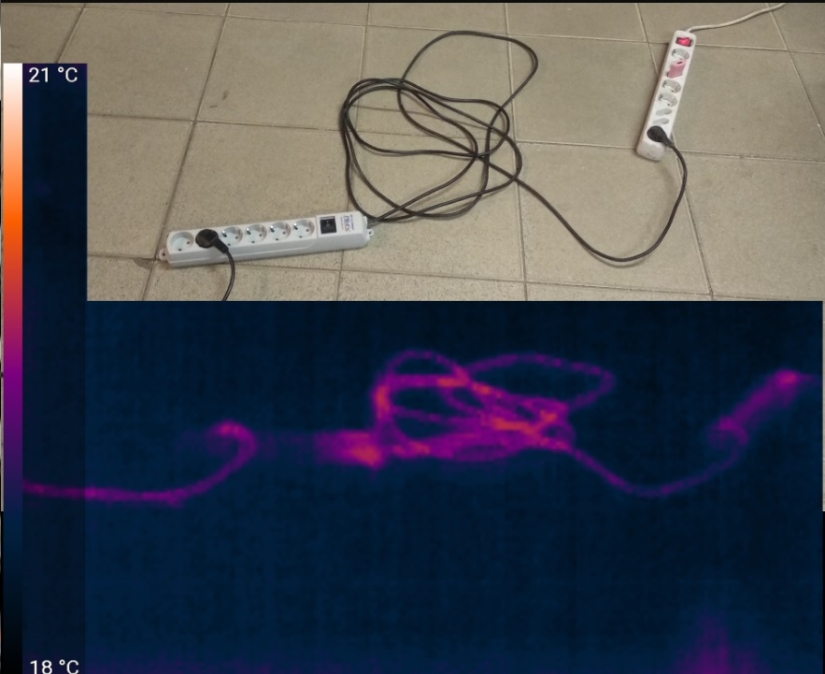
If the cable is lying freely on the ground, then the heat is removed well, and overheating does not occur. But if the cable is rolled into a bay, then the coils warm each other, only the outer layers cool down well, so the heating can be so strong that the insulation will start to melt, with a short circuit afterwards.
When working at maximum power (welding machine, electric kettle, electric stove, microwave oven with grill, etc.), always unwind the extension cord.
The service life of cables is usually high, if the cable insulation is not damaged, has no cracks, mice did not eat it, heels did not trample it, the sun did not bake, then the cable will definitely last 10 years. But the socket block, in which the plugs of electrical appliances were constantly turned on and off, can fail in a year or two. Therefore, if you bought an expensive extension cord with a good thick cable of large cross-section, then you can buy a new socket block and repair the extension cord. Pay close attention to the socket block – if there are traces of melting, darkening, extraneous rustling sounds, heating - it's time to replace it.
It is worth thinking about the insulation material if you work in the cold or at high temperatures. 99% of cables are made with insulation of their plasticized PVC - this polymer is flexible, does not conduct current, and does not support gorenje, damping (which is probably the most important for the cable). But in the cold, PVC turns brown, you could feel it using headphones in winter. Not only is such a cable inconvenient to handle, so the insulation can literally break down in the cold. In the heat (at temperatures above 80 C, for example in a steam room) PVC on the contrary becomes too soft.
To work in the cold, in the heat, extension cords with a rubber-insulated cable are produced. They are, of course, more expensive.
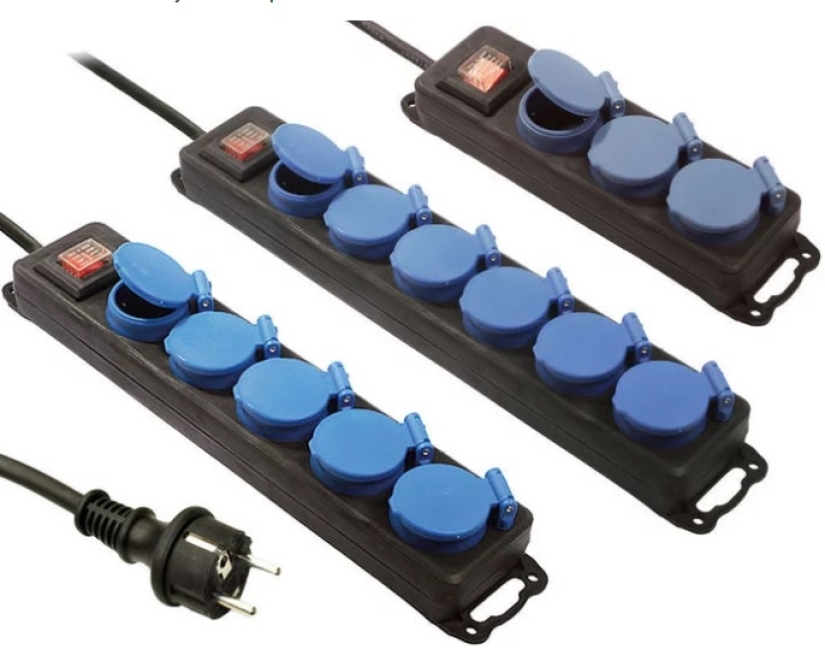
For work on a construction site, in the country, on the road, wherever moisture or dust may get in– an extension cord with moisture protection will not hurt. Such protection protects well from accidental splashes, but it is definitely not worth sending a block of sockets to swim in a puddle.
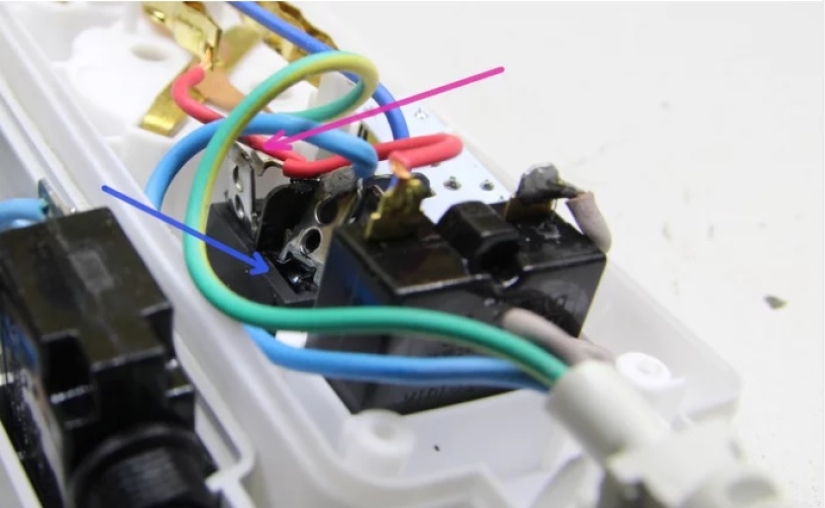
For convenience, the manufacturer can add a switch. It is convenient when such a block of sockets is on the table – you leave, and with one click you turn off all electrical appliances. But the switch is an additional contact group that can fail, especially if the supplier has slipped a batch of low-quality switches to the manufacturer. Regularly repairing a faulty extension cord is reduced to replacing the melted switch. Therefore, if you do not plan to use the switch, it is better without it.
Also, the manufacturer can add a small automatic fuse that will work when the current is exceeded. Since such protection is based on a bimetallic plate, the protection is very slow, when a short circuit is usually triggered by an automatic switch in the electrical panel. Theoretically, such a switch should work during prolonged operation with a slight excess of current, but my IMHO if the cross section of the extension cord is comparable to the cross section of the cable in the wall, and allows operation at the maximum current for the plug, then the circuit breaker in the shield provides protection.
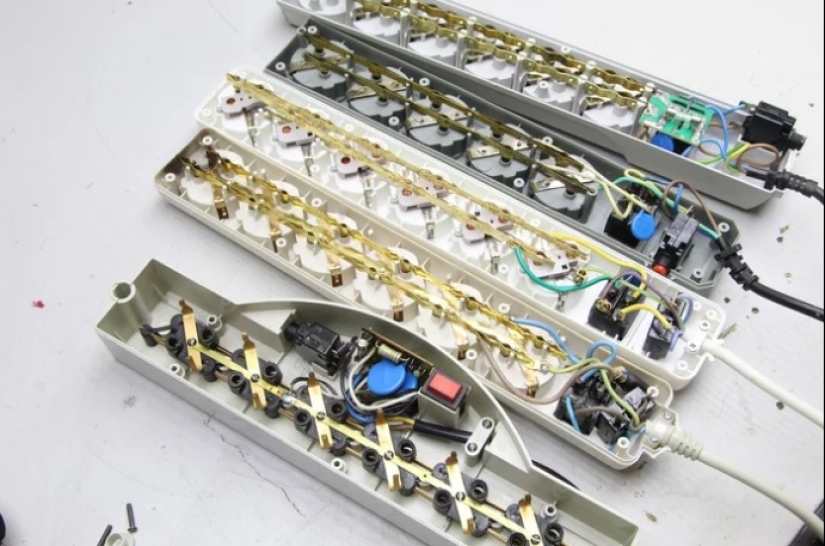
An extension cord is called a mains filter, in the socket block of which there is a certain node that can be called a filter. It can be just a varistor (a blue washer with two terminals, often mistaken for a capacitor), or a full-fledged filter with chokes, varistors, suppressors and even arresters. The need for a filter is a controversial issue, any switching power supply usually contains a similar filter. If you do not live in a country house or in a village with long overhead lines, there is no need to buy and overpay for a mains filter. In the photo, network "filters". Only pilot-s in the photo above and vektor solo at the bottom has something sane. For the rest, the "filter" is reduced to only one varistor.
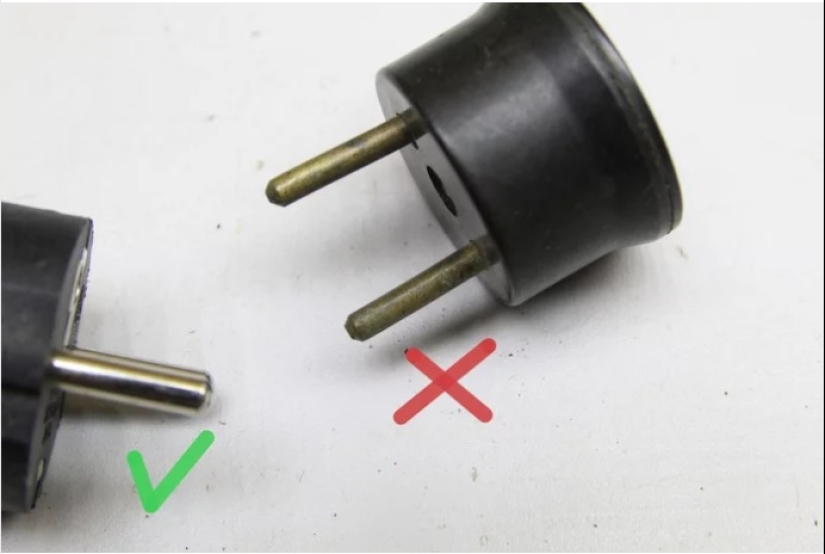
Although they did many things with a huge margin of safety, there were also systematic failures. One of them is the lack of galvanic coating on the contacts to protect against corrosion. And a beautiful plug with brass contacts turns black over time. Such a plug gives a large contact resistance, which is why it is heated with all the attendant consequences. Therefore, take a closer look, maybe it's time to cut off the refrigerator fork at the dacha, and put a brand new one?
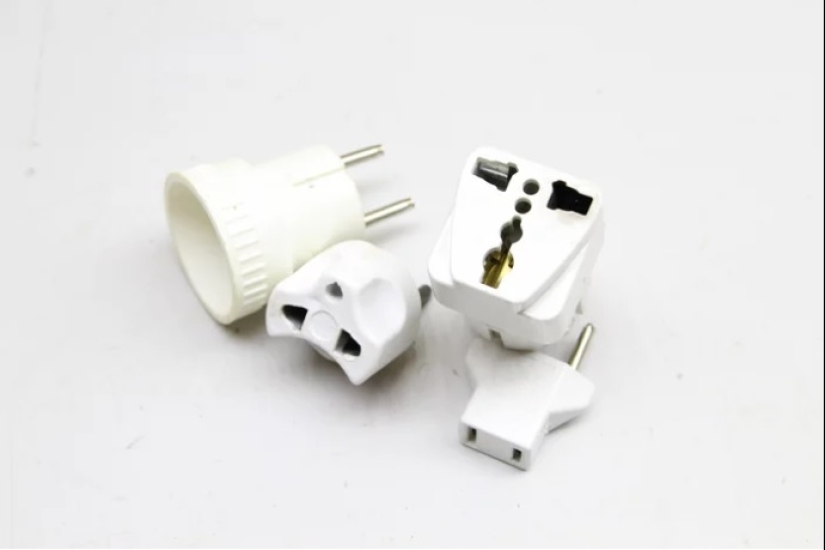
They are used if the equipment has a plug of a different standard (for example, a device for the domestic Chinese market). Usually such adapters are of damn poor quality, and the contacts simply unbend and do not spring. If you turn on something a little more powerful than charging from a cell phone in such an adapter, then sooner or later you will feel the smell of burning. Cut off the wrong plugs from the appliances and stick the standard ones, they are sold in any hardware and construction store.
Recent articles

When you are small, the world seems simpler and there are almost no barriers, and there are no unnecessary rules. Kids sincerely ...

The period of the Civil war will forever remain in history as a time of anarchy, violence and destruction. This era has produced ...

Helmets are more than just protection in battle. They tell us stories about the warriors of the past, the technology of their time, ...